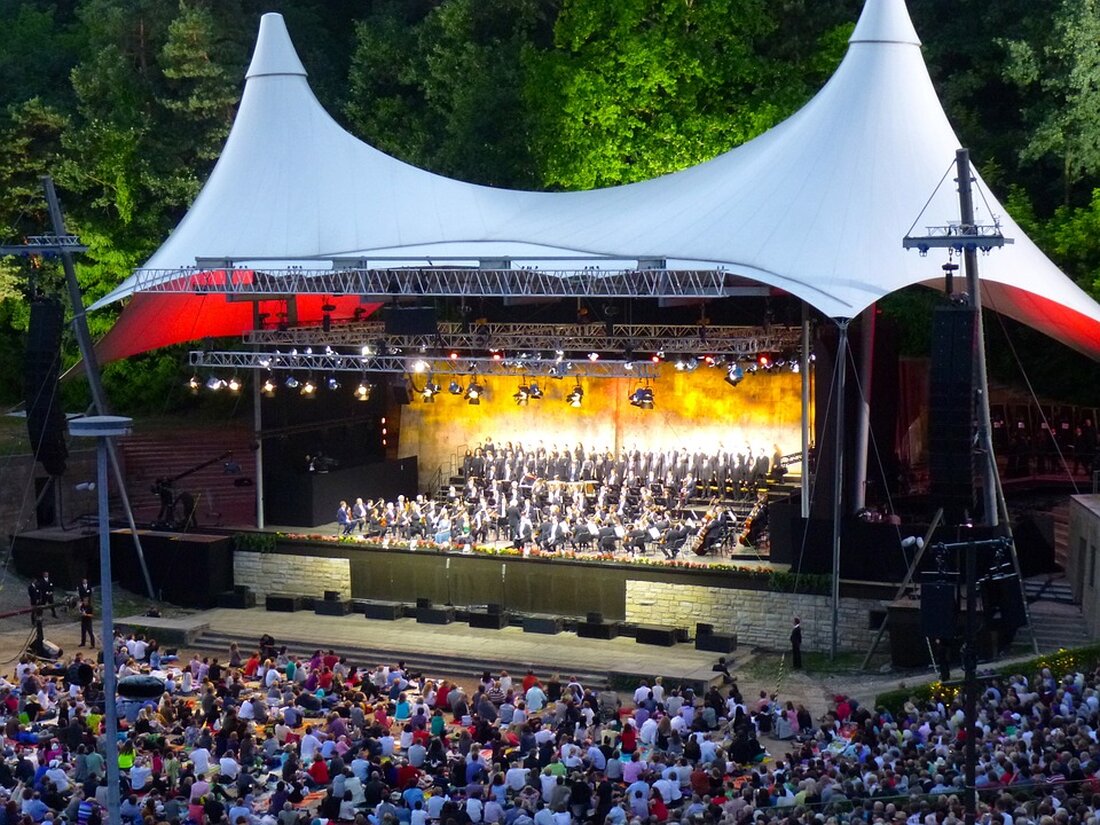The Waldbühne Berlin: Between summer concerts and dark history
The Waldbühne Berlin: Between summer concerts and dark history
The Waldbühne in Berlin is an integral part of the summer cultural program for many. Every year it attracts about half a million people who look forward to a wide range of concerts. In the summer months of 2024, great artists such as Peter Maffay and Clueso also performed, while Roland Kaiser and Paul Kalkbrenner are also on their list. But while the visitors enjoy the music and the picturesque backdrop, the dark history of the forest stage often remains in the background.
The impressive architecture of the Waldbühne shows that it comes from another time. The massive stone structures are reminiscent of numerous buildings from the time of National Socialism. In fact, the Waldbühne was built under the supervision of Joseph Goebbels, the then Minister of Propaganda, who called for the construction of this open -air stage. Adolf Hitler himself once had a much larger stage for 100,000 spectators, but a capacity of around 22,000 visitors was finally realized.
The history of the building
The building complex was created as part of the preparations for the 1936 Olympics in Berlin. The architect Werner March, who also designed the Olympic Stadium, was responsible for the Waldbühne. Originally opened under the name "Dietrich-Eckart-stage", it was created with the intention of not only serving as an event location for cultural events, but also as a thing, where the ideology of the Nazi dictatorship should be propagated with the help of Thing games. These games were part of a method to enforce the concept of the “popular community” against other groups.
The transformation after the war
After the end of the Second World War, the Waldbühne experienced a transformation. First, it was used as an open -air cinema and served, among other things, as an event location for the Berlinale, a well -known film festival. Over time, however, the focus shifted and boxing matches also took place. In the 1960s, war damage on the Waldbühne was removed, and it increasingly developed into a concert location. An unforgettable event was the Rolling Stones concert in 1965, which led to an excited crowd, some of which demolished the seats and came in conflict with the police. The stage remained closed for some time until it was repaired.
With the redesign in the 1980s, the forest stage received the striking tent roof, which is now its distinguishing feature. Since then, numerous concerts have taken place here, and the eerie past is often ignored. Today's use of the Waldbühne gives it a new meaning, but the shadows of its creation still throw a long shadow on the cultural heritage of the capital.
dark shadows of the past
Although the Waldbühne is a coveted venue for fans, its history remains unknown to many. The symbols of the National Socialist architecture, the dark past and the legacy of propaganda are part of a cultural memory that is often overlooked. It is important that such historical contexts are understood and discussed so that events do not lose themselves. The Waldbühne is not only a stage for music and art, but also a memorial to the events of the past and how they can continue to influence people.
The importance of the forest stage for the cultural scene of Berlin
The Waldbühne has not only established itself as an important venue for music, but also as an important part of the Berlin cultural and event scene. Not only concerts take place here, but also various cultural events, festivals and film performances. The unique open -air atmosphere not only attracts local visitors, but also tourists from all over the world. This diversity shows how the Waldbühne has developed into a cultural meeting point for different generations and social groups over the years
Especially during summer, the forest stage is visited by people of all ages. It has developed into a symbol of the Berlin attitude to life in recent decades. Whether it is large international stars or local artists, the stage offers space for a variety of music styles and styles. Special occasions, such as the open-air festival "Rock im Park", attract a wide audience in its own way and promote the exchange between different cultures.
architecture and design: a tribute to antiquity
architecturally, the Waldbühne is a remarkable example of combining functionality and aesthetic claim. Designed by Werner March, the stage combines a design that is reminiscent of the classic Greek theater with modern elements. The contemplative nature of the design was deliberately chosen in order not only to captivate the viewers visually, but also to optimize acoustically. This architectural orientation ensures that the sounds of the musicians can be viewed authentically and clearly in the entire area of the Waldbühne.
The characteristic tent roof, which was added in the 1980s, not only offers protection against rain and sun, but also contributes to acoustics and visual attraction of the area. The investments in the modernization and renovation of the Waldbühne are proof that this historical site embodies important cultural values for the city of Berlin.
- Nag


Kommentare (0)